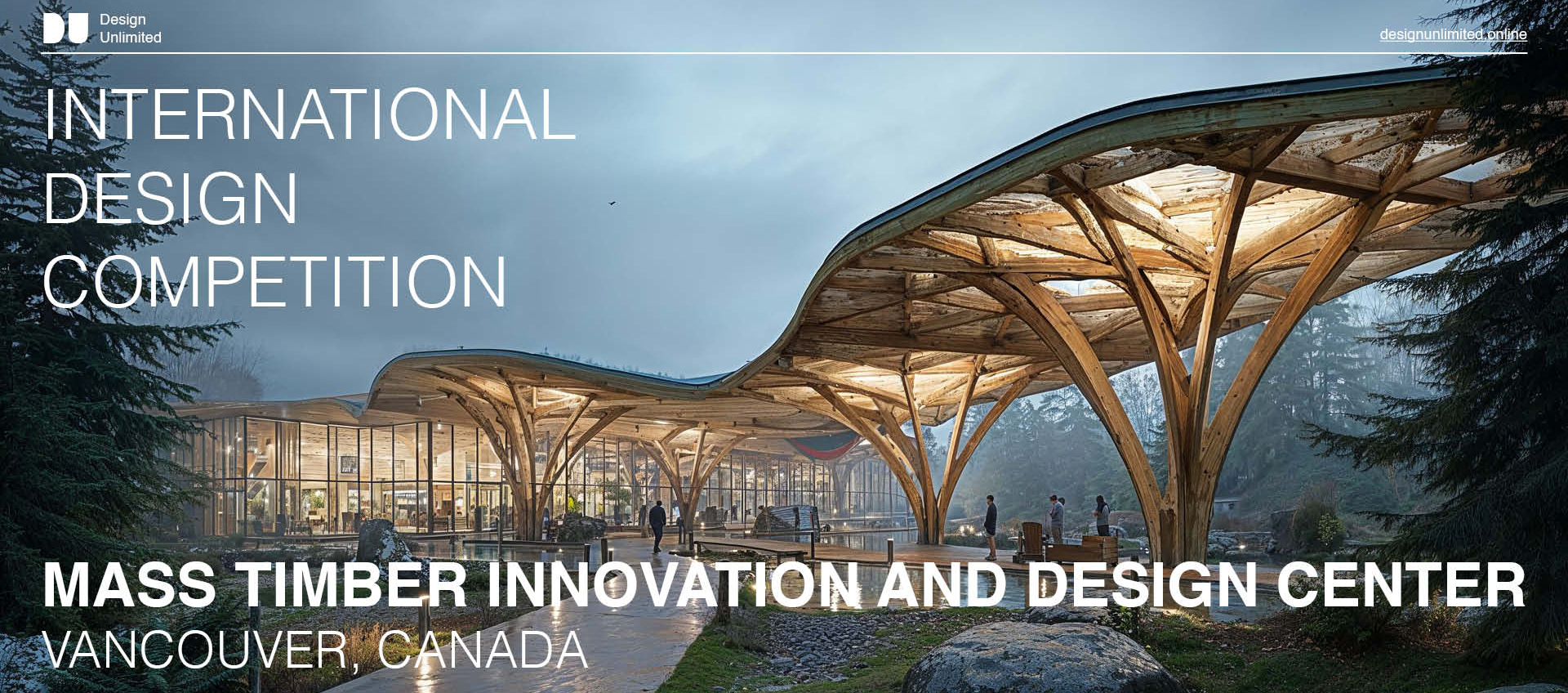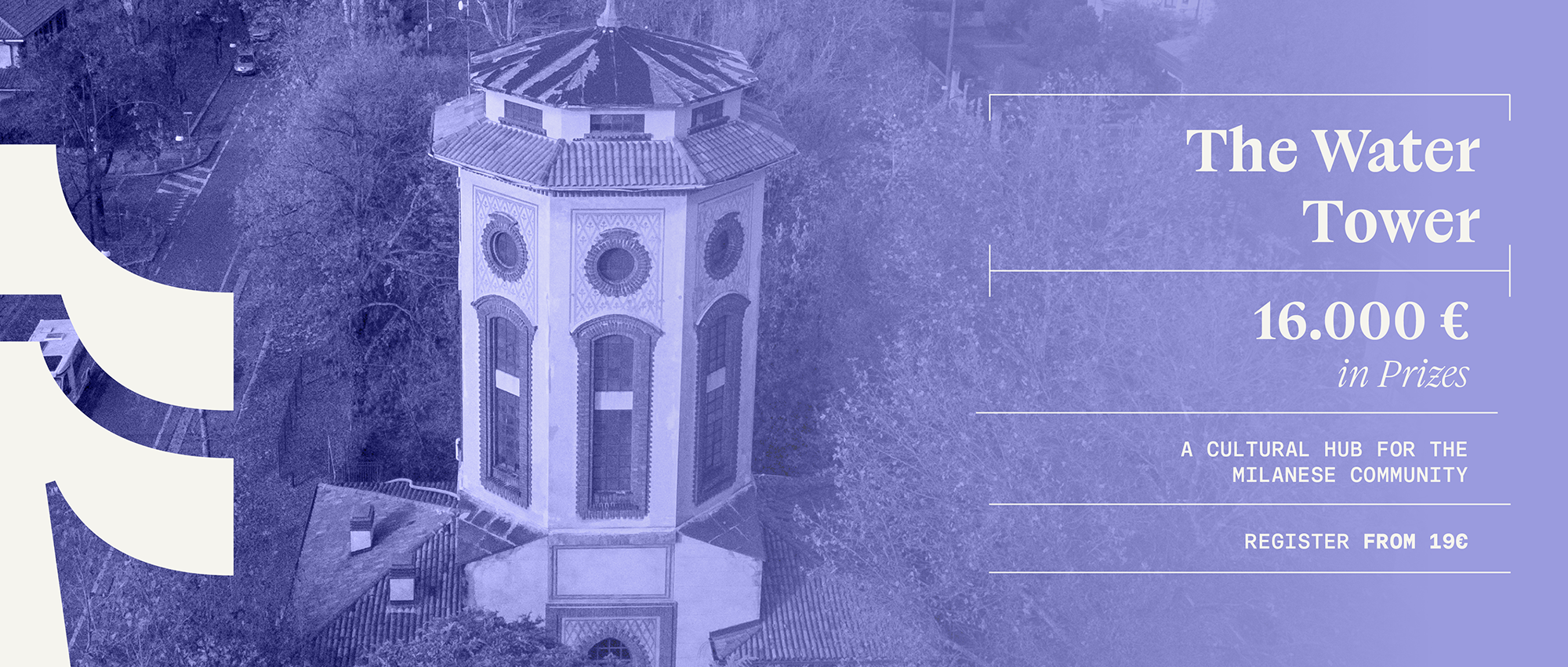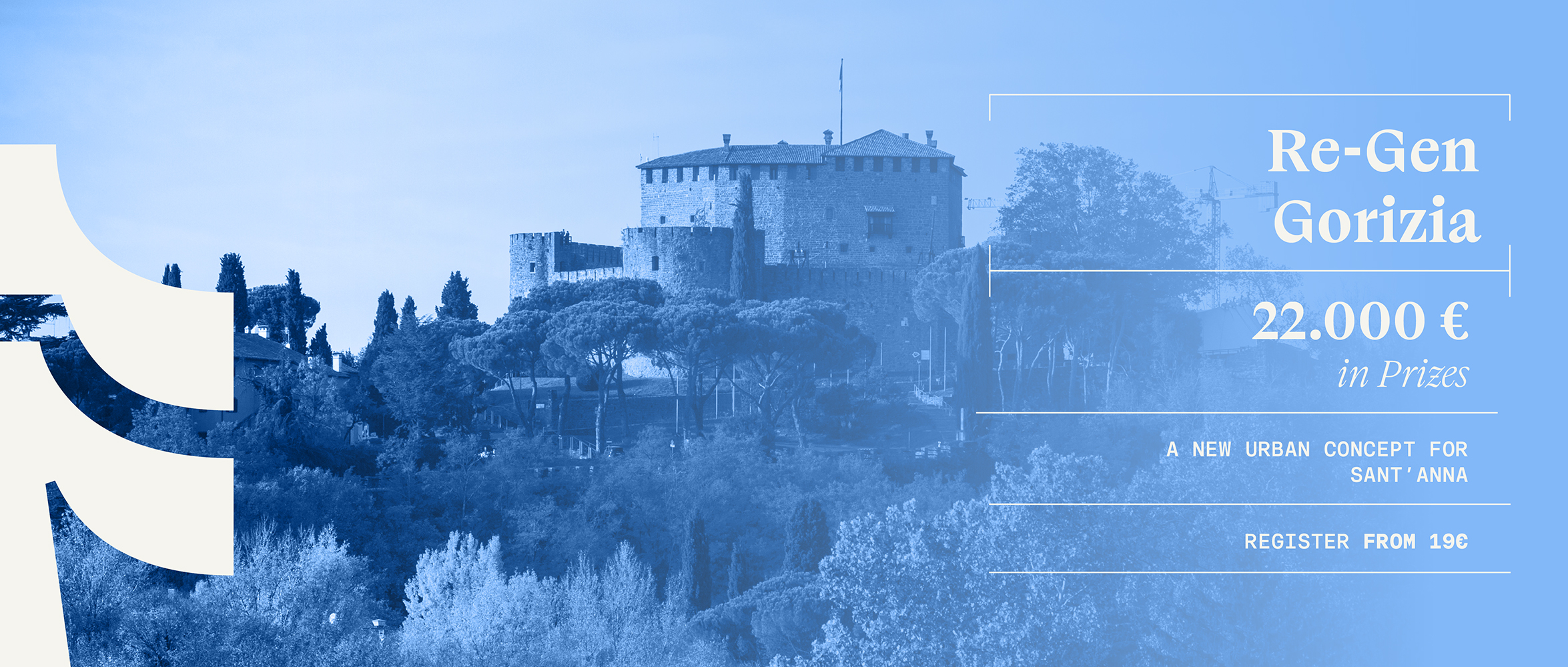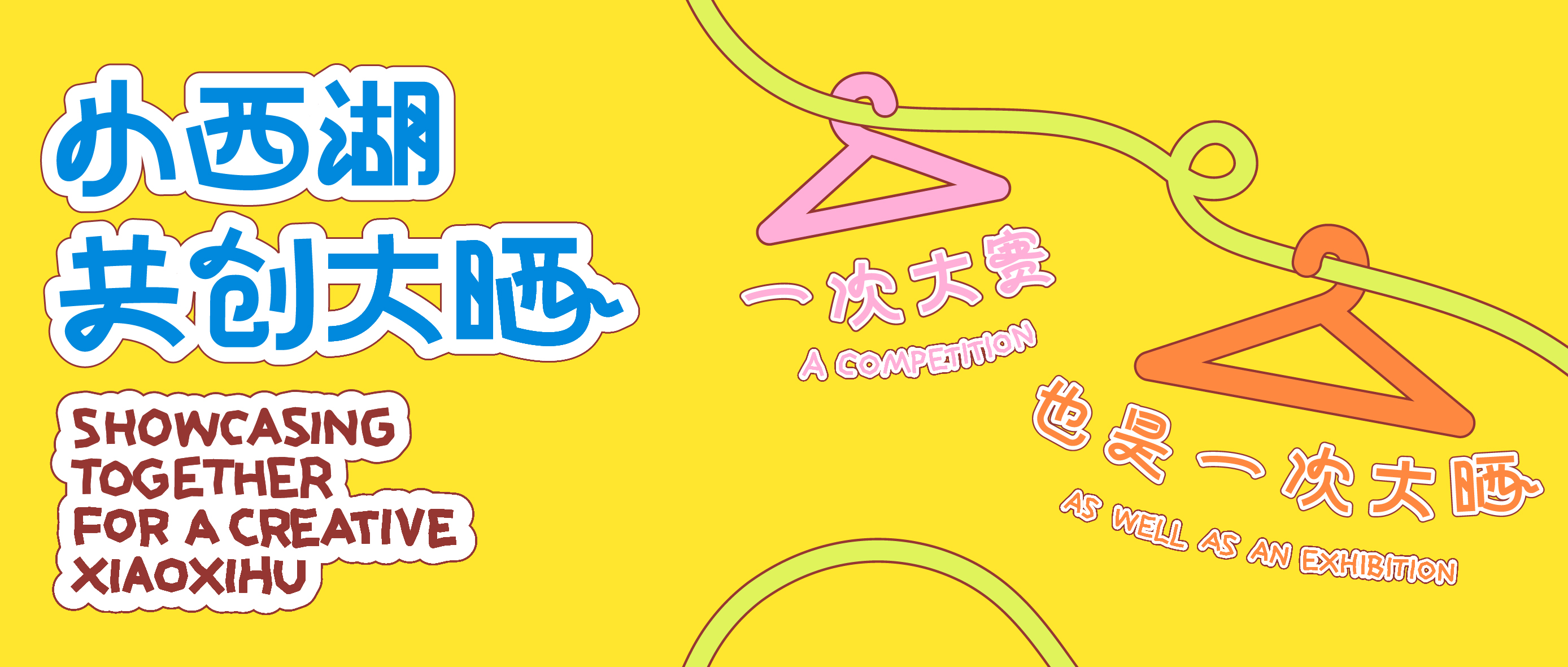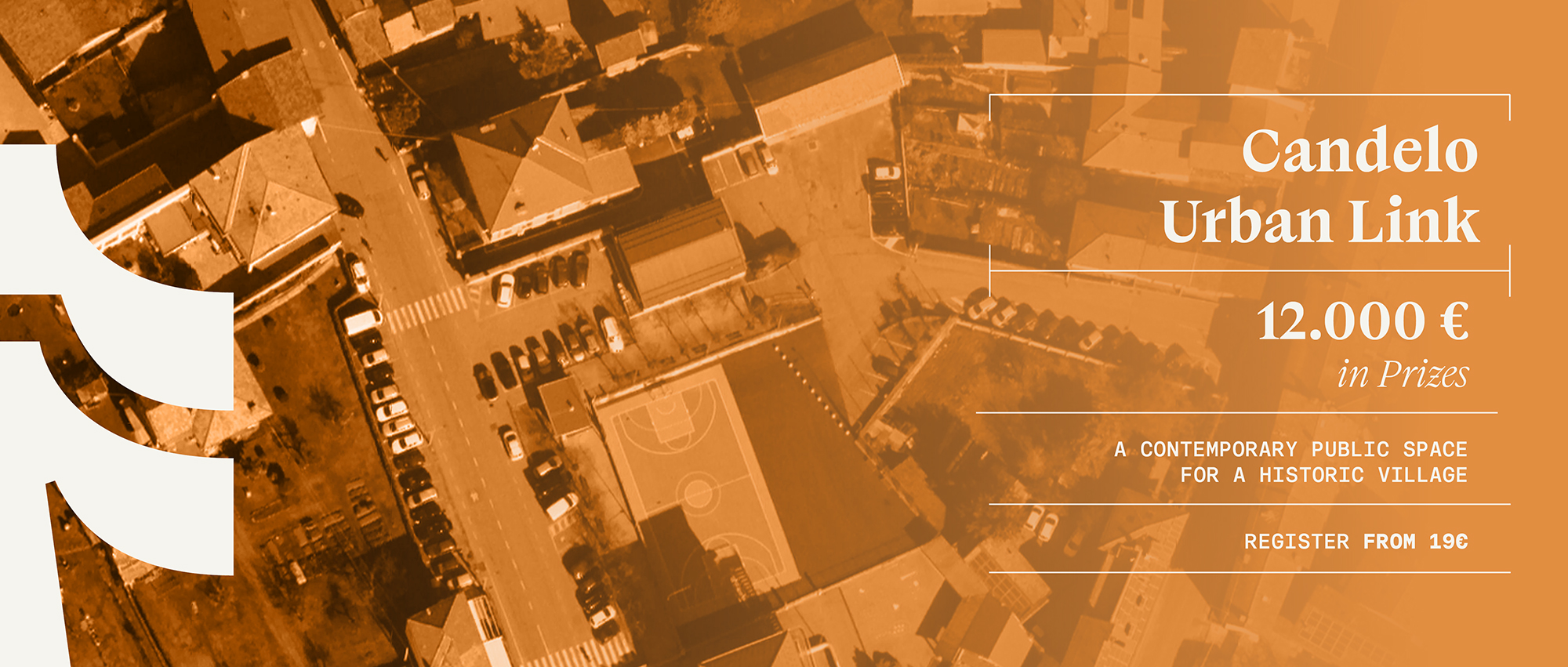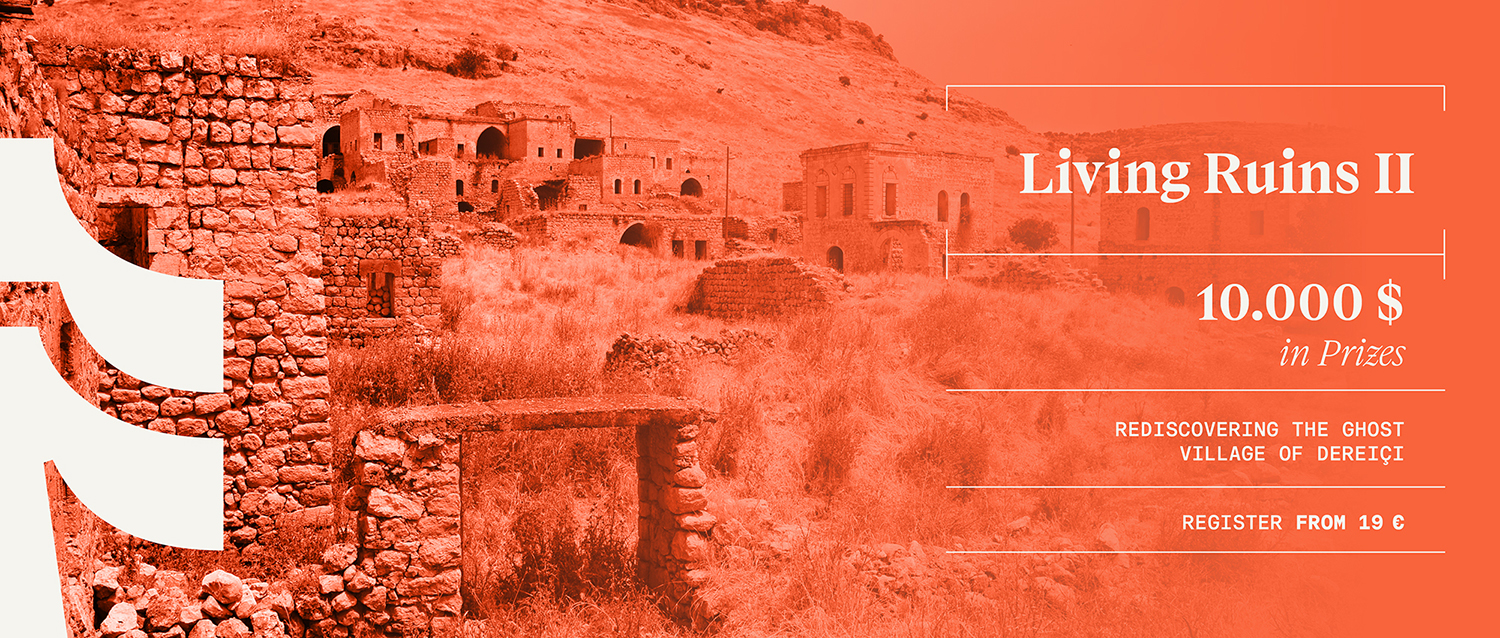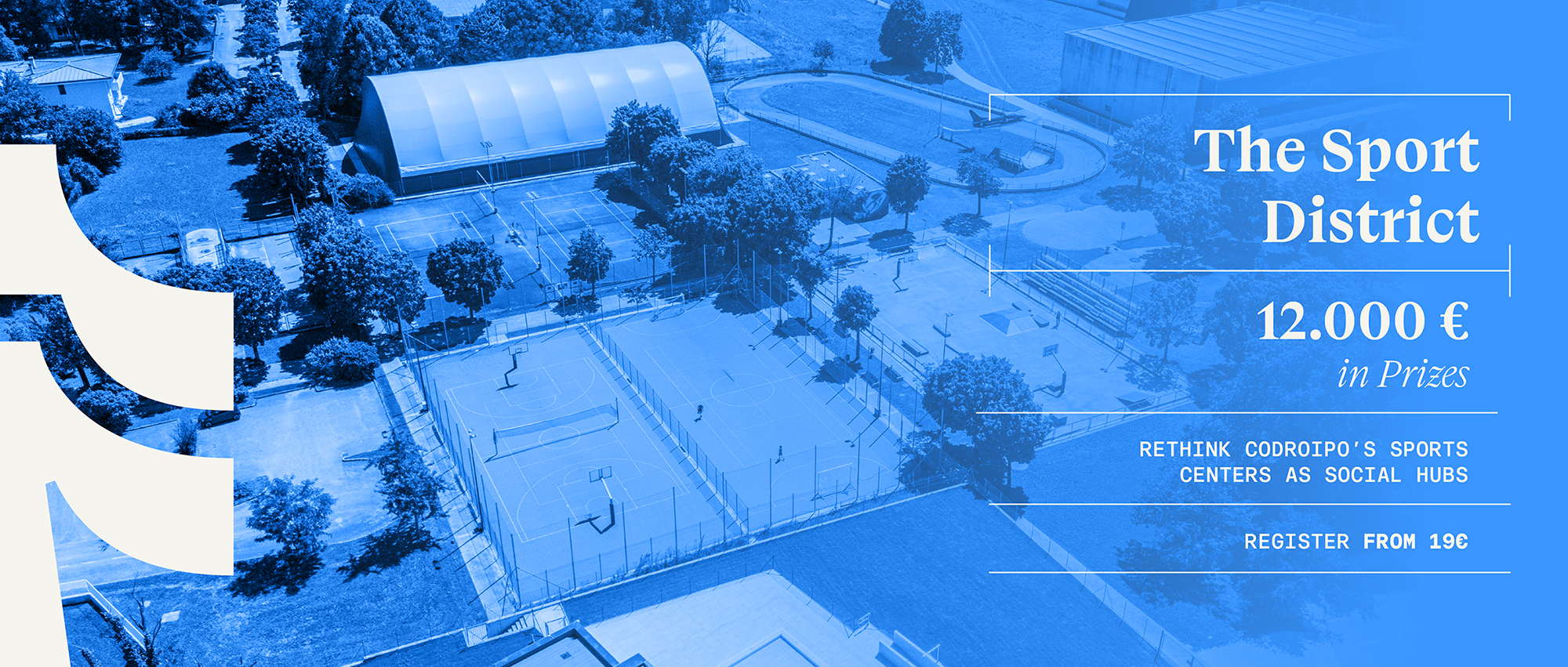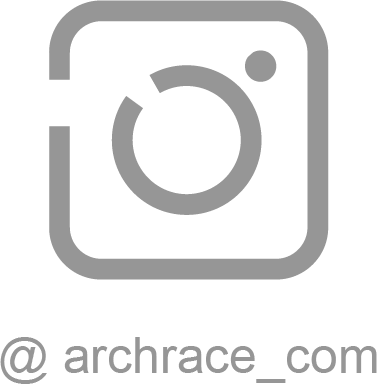正式公告
飞龙湖概念性城市设计国际方案征集
Announcement
Feilong Lake Conceptual Urban Design International Solicitation
一、项目背景
1. Background
《台州市国民经济和社会发展第十四个五年规划和二〇三五年远景目标纲要》中提到:台州将加快二次城市化,建设省域开放型高能级中心城市。推动中心城市向“三区两市融合”的发展格局迈进,提升中心城市作为市域政治、经济、文化、科创中心的城市首位度。因此,加快中心崛起、推动市区融合是事关台州发展全局的重大战略,也是贯穿台州城市化始终的一个重大命题,未来要从“立足新发展阶段、贯彻新发展理念、构建新发展格局”的高度,高质量推进城市融合发展,创造城市美好生活。飞龙湖生态区是台州市区几何中心,是绿心生态区的核心区块,规划面积28平方公里,因坐拥飞龙湖而得名,区内“山湖林田草”等生态资源丰富,不仅是城市中心“绿肺”,也是整合椒江、黄岩、路桥三区联动发展的纽带,更是推进台州城市化进程中,不可缺少的山水灵脉,具有独一无二的区位优势和战略地位。
为达到项目高点定位的要求,本次城市设计方案采用国际征集方式,旨在向国内外顶尖设计机构征集具有前瞻性、创新性、可实施的设计方案。
Taizhou City's the Fourteenth Five-Year Plan for National Economic and Social Development and Outline of Long-term Goals for 2035 mentioned: Taizhou will speed up the second urbanization, the construction of provincial open high energy center city. To promote the central city to the development pattern of "integration of three districts and two cities", and enhance the primacy of the central city as a municipal political, economic, cultural and scientific innovation center, therefore, to speed up the central rise, the development of urban integration is a matter of Taizhou significant global strategy, is also a major proposition throughout the course of the Taizhou urbanization, the future from the "based on the new stage of development, carry out the new development concept and build a new development pattern of high quality to promote urban integration development, as well as creating better city life. Feilong Lake eco-area is the geometric center of Taizhou city, and is also the core of ecological green heart block. The planning area is about 28 square kilometers with rich in ecological resources, such as: mountain-lake-farmland-grass-forest.The feilong Lake area is not only the "green lung"of Taizhou city but also the bonding area of Jiaojiang,-Huangyan-Luqiao districts. It is also the indispensable landscape context during the urbanization process of Taizhou city with unique location advantage and strategic position.
In order to meet the requirements of the high-point positioning of the project, the urban design plan adopts the international solicitation method, which aims to solicit forward-looking, innovative and implementable design solutions from top design institutions at home and abroad.
二、组织机构
2.Organizing units
主办单位
台州市自然资源和规划局路桥分局
浙江路桥飞龙投资开发有限公司
承办单位
中国生态城市研究院有限公司
Organizer
Taizhou natural resources and planning bureau
Zhejiang Luqiao Feilong Investment and Development Co., Ltd
Organizer
China Eco-City Research Institute Co., Ltd
三、设计范围
3. Design Scope
本项目设计范围分为三个层面:研究范围、概念城市设计范围及核心区深化设计范围。
The design scope of this project is divided into three levels: research scope, conceptual urban design scope and core area deepening design scope.
1、研究范围:
包含城市绿心、周边主要山体、水系、廊道以及重要的城市功能板块,从更大范围去进行城市山水生态格局,周边功能联动及景观风貌等方面的综合分析和研究,具体研究范围可由应征单位根据理解自行确定。
The research scope: Making comprehensive analysis and research on the ecological pattern of urban landscape, the linkage of surrounding functions and landscape features from a wider scope, including surrounding mountains, water systems, urban corridors and important urban functional plates. The scope can be determined by the applicant based on its understanding.
2、概念城市设计范围:
北至山体,南至南官河,东至财富大道,西至黄岩界总面积约28平方公里。
Conceptual urban design scope: north to the mountain, south to Nanguan River, east to Fortune Avenue, west to Huangyan, with a total area of about 28 square kilometers.
3、核心区深化设计范围:
总面积约14.71平方公里。
Core area detail design: 14.71 square kilometers.
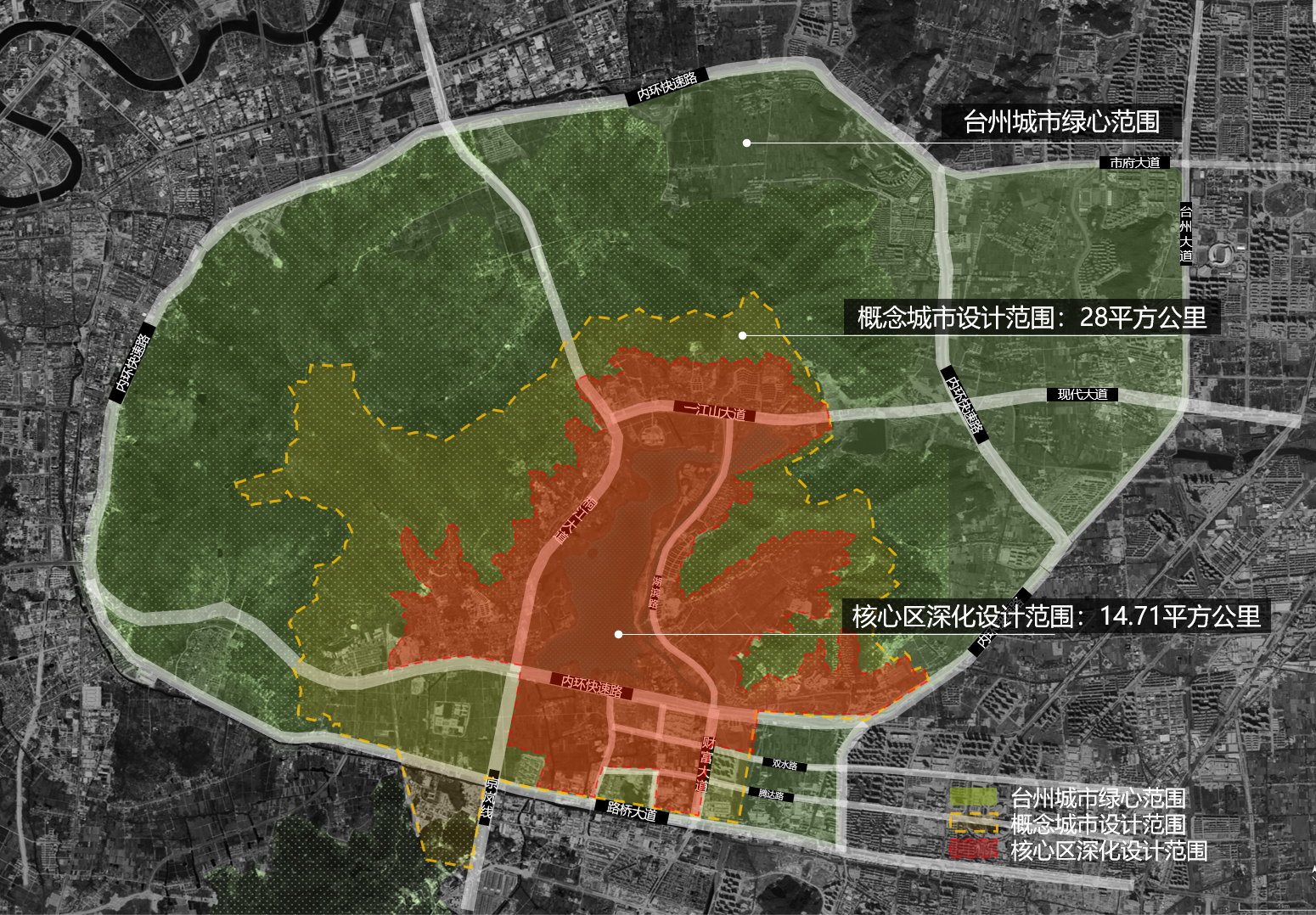
图1:规划设计范围示意图
Figure 1: planning and design scope
四、设计目标
4.Design Goals
(1)打造三区联动的纽带
(1)Build Bonding Area of three districts
飞龙湖生态区作为台州城市绿心区块的核心,是台州中心城区的“几何中心”,是整合台州三大城区联动发展的纽带,具有独一无二的区位优势和战略地位。本次设计需要通过对飞龙湖片区的生态本底的梳理、与周边地块的功能联动、交通联系、文脉延续、空间整合及形象的提升等方面着手,明确飞龙湖片区在整个台州城市发展中承担的角色,清晰片区的发展定位及目标策略,使得飞龙湖生态区成为联动三区发展的纽带,加快市区融合,打造台州生态文明时代的城市客厅,迎接五湖四海宾客。
Acting as the core of Taizhou's urban green heart, Feilong Lake Ecological Zone is the "geometric center" of Taizhou's central urban area. The target of this design is to clarify the role of the Feilong Lake area in the development of the entire Taizhou city as well as the development orientation and strategy of the area based on the study of ecological background of Feilong Lake area,Function linkage with surrounding land, transportation connection, continuation of the urban context, spatial integration and image enhancement. Thus, makes Feilong Lake Ecological Zone a link for the development of the three zones, accelerates the integration of urban areas, and creates an urban living room in the era of Taizhou's ecological civilization to welcome guests from all over the world.
(2)打造生态智城的典范
(2)Build Sample of Eco-Smart City
城市设计要全面借鉴国内外低碳智慧城市的发展经验,高标准谋划具有“绿色智慧、水城共融、优质配套、高效便捷、机制创新”等特色的低碳智慧新城,紧扣“生态、智慧、零碳”等关键词,按照新型城镇化的建设要求,充分挖掘飞龙湖片区“山湖林田草”一体的优质本底资源,完善城市山水布局,并以国内外低碳智慧城市的发展经验为借鉴,以零碳为目标,开展生态文明试验区建设,拓宽绿水青山就是金山银山转化通道,建立健全生态产品价值实现机制,探索完善具有浙江特点的生态系统生产总值(GEP)核算应用体系,全面打造未来山水生态智慧城建设的典范。
Urban design should rely on the development experience of low-carbon smart cities around the world and plan low-carbon smart new cities with high standards such as "green intelligence, water-city integration, high-quality supporting facilities, high efficiency and convenience, and system innovation". According to the construction requirements of new urbanization, this design should take full advantage of the high-quality background resources of "mountains, lakes, forests, fields and grasses" in the Feilong Lake area, improving the urban landscape layout, and use the development experience of low-carbon smart cities around the world. In order to carry out the construction of ecological civilization pilot area, widen the transformation channel of green water and green mountains into invaluable assets, establish and improve the value realization mechanism of ecological products, and explore and improve the gross ecosystem product (GEP) accounting with Zhejiang characteristics. The application system will comprehensively create a model for the future construction of Shanshui Ecological Smart City.
(3)打造创新驱动的策源地
(3)Build Origin of Innovation Drive
设计需要落实“台州湾科创走廊”、“环飞龙湖科创生态圈发展规划”的要求,紧扣“科创引领、未来驱动、以人为本”等关键词,依托飞龙湖生态本底与交通区位优势,统筹布局科技创新基础设施,将环飞龙湖科创生态圈建设成为路桥科技创新的主阵地、台州湾科创走廊的重要组成部分、长三角科技创新共同体的重要节点,努力建设成为立足路桥、面向台州、引领长三角区域科创高地。
The design has to implement the requirements of "Taizhou Bay Science and Technology Innovation Corridor" and "Development Plan for the Science and Technology Innovation Ecosphere Around Feilong Lake". Closely follow the keywords of "science and technology innovation, future-driven, people-oriented", relying on the ecological background and traffic location of Feilong Lake. Advantages, coordinate the layout of scientific and technological innovation infrastructure, and build the ecological circle of science and technology innovation around Feilong Lake into the main position of road and bridge technology innovation, an important part of Taizhou Bay science and technology innovation corridor, and an important node of the scientific and technological innovation community in the Yangtze River Delta, and strive to build a road and bridge-based scientific and technological innovation community. , Facing Taizhou, leading the highland of science and technology innovation in the Yangtze River Delta region.
(4)打造共同富裕的标杆
(4)Build Benchmark of Common Prosperity
设计要坚持以人民为中心,构筑“生态+文化+创新+智慧+善治”五大维度的可持续发展模式,围绕生态环境、城市建设、休闲旅游、美丽宜居四大主题,将飞龙湖片区建成‘山水城相联、人景城相融’的城市新名片。打造台州的‘城市之心’,形成“经济高质高效”、“生活富裕富足”、“精神自信自强”、“环境宜居宜业”的全国共同富裕先行示范区标杆。
The design should adhere to the people-centered, build a sustainable development model with five dimensions of "ecology + culture + innovation + wisdom + good governance", and focus on the four major themes of ecological environment, urban construction, leisure tourism, and livability,creating the new name card of the city, which is “people-city-scenery” integration. Thus, build the benchmark of "High-quality and efficient economy", "rich and prosperous life", "spiritual self-confidence and self-improvement", "environmentally livable and suitable for business" national common prosperity pilot demonstration area.
五、设计内容
5. Design content
本次设计内容分为概念城市设计、核心区深化设计及专题研究三部分。
The design content is divided into three parts: conceptual urban design, core area urban design and special research.
1、概念城市设计篇
1、Conceptual Urban Design
本次设计一方面需基于台州城市发展格局,以更高视野、更高标准去研判飞龙湖片区在整个台州城市发展中承担的角色,通过对飞龙湖片区的生态本底的梳理、与周边地块的功能联动、交通联系、文脉延续、空间整合及形象的提升等方面着手,清晰片区的发展定位及目标策略;另一方面需通过功能的策划、形态的塑造、文化的植入等方面去塑造特色鲜明的城市名片,打造城市魅力的新燃点。工作主要任务包括但不限于以下主要内容:
On the one hand, this design needs to be based on the urban development pattern of Taizhou, with a higher vision and higher standards to study and judge the role of Feilong Lake in the development of the entire Taizhou city. The functional linkage, traffic connection, context continuation, spatial integration and image enhancement of the block should be started to clarify the development orientation and target strategy of the block; To shape a distinctive city business card, to create a new burning point of urban charm. The main tasks of the work include but are not limited to the following main contents:
(1)总体目标定位
(1)General Target Position
系统分析、评估城市总体规划、发展战略规划等上位规划,结合在编国土空间总体规划(2020-2035),提出飞龙湖片区的职能定位与发展目标。定位与目标的制定需充分考虑飞龙湖片区在台州城市整体发展中所承担的角色,协调与周边板块的功能联动。
Systematically analyze and evaluate the overall urban planning, development strategy planning and other upper-level plans, combined with the overall national land and space planning (2020-2035) in preparation, and propose the functional orientation and development goals of the Feilong Lake area. In the formulation of positioning and goals, it is necessary to fully consider the role of Feilong Lake area in the overall development of Taizhou city, and coordinate the functional linkage with the surrounding areas.
(2)生态环境保护
(2)Ecological Environment Protection
从区域生态格局保护的角度,结合现状的水网体系,重点构建飞龙湖片区的大山水生态空间格局。结合对场地生态斑块的梳理,构建飞龙湖片区的整体的生态安全格局,明确飞龙湖地区防洪排涝体系和场地竖向要求,锚固生态底板,建设“韧性、安全”的生态亲和型城乡空间。运用先进的生态建设理念与切实可行的生态治理技术,提出生态保护与品质提升办法。
From the perspective of regional ecological pattern protection, combined with the current water network system, to focus on constructing the great ecological spatial pattern of mountains and waters in the Feilong Lake area. Combined with the sorting out of the ecological patches of the site, to construct the overall ecological security pattern of Feilong Lake area, to clarify the flood control and drainage system and vertical requirements of the site in Feilong Lake area, to anchor the ecological floor, and build a "resilient and safe" ecologically friendly urban and rural space. Using advanced ecological construction concepts and practical ecological governance technologies to come out with methods for ecological protection and quality improvement.
(3)产业发展引导
(3)Industrial Development Guidance
以建设“未来城市标杆”为导向,围绕“创新+”“智慧+”“绿色+”的发展理念,借鉴国内外同类型湖区的产业发展经验,研判未来产业发展趋势,制定飞龙湖片区的产业发展目标,明确主导产业类型,并提出政府扶持政策建议。另外,要处理好“产业”与“环境”的关系,注重产业功能与山水环境的联动发展,培育创新链与产业链共进的产业体系、塑造“山水韵”、“精致范”和“现代风”共鸣的未来产业场景。
Guided by building a "future city benchmark", centering on the development concepts of "innovation +", "wisdom +" and "green +", referring to the industrial development experience of the same type of lake area in domestic and overseas, estimating the future industrial development trend, and formulating the industry of Feilong Lake area Development goals, to clarify the types of leading industries, and put forward government support policy recommendations. In addition, it is necessary to properly handle the relationship between "industry" and "environment", paying attention to the coordinated development of industrial functions and landscape environment, cultivating an industrial system in which the innovation chain and industrial chain advance together, and create "landscape charm", "exquisite style" and "modern" The future industrial scene that resonates with the wind.
(4)用地布局优化
(4)Land Layout Optimization
在充分衔接相关规划的基础上,根据目标定位,结合特色资源和产业布局,提出飞龙湖片区用地布局优化总体思路,总结用地布局优化要点,明确需进行调整的区域,以便指导下一步控规修编。
On the basis of fully connecting relevant plans, according to the target positioning, combined with characteristic resources and industrial layout, the general idea of land use layout optimization in Feilong Lake area is put forward, the key points of land use layout optimization are summarized, and the areas that need to be adjusted are identified to guide the next step. ed.
(5)综合交通规划
(5)Comprehensive Traffic Planning
在充分分析既有规划和区域定位的基础上,对片区现状和规划道路交通进行梳理,提出城市综合交通的发展目标和总体策略。重点打造低碳绿色、高效畅达、特色多元、智慧赋能的综合交通体系。改善交通出行结构,提出绿色交通的指标控制要求。构建与市域轨道S1线的快捷联系,提升交通可达性。飞龙湖片区范围内应结合场地特色,打造贯穿全域的与山水呼应的特色慢行交通体系,结合环湖空间及现状水系打造城市绿道、结合水上交通构建蓝道系统,结合周边山体游步道形成山顶风景道,最终形成“三道融合”的慢行体系,并提出道路的断面设置方案。
On the basis of fully analyzing the existing planning and regional positioning, the current situation of the area and the planned road traffic are sorted out, and the development goals and overall strategies of urban comprehensive traffic are proposed. Focusing on building a comprehensive transportation system that is low-carbon, green, efficient and accessible, with diverse features and smart empowerment. Improving the traffic travel structure and put forward the index control requirements for green traffic. Building a quick connection with the S1 line of the urban railroad to improve traffic accessibility. Within the Feilong Lake area, the characteristics of the site should be combined to create a characteristic slow traffic system that echoes the mountains and rivers throughout the whole area, combined with the space around the lake and the current water system to create an urban greenway, combined with water traffic to build a blue way system, combined with surrounding mountain trails to form the peak scenic road, and finally formed a slow traffic system of "three roads fusion", and proposed a plan for the section setting of the road.
(6)开放空间组织
(6)Open Space Organization
充分利用场地背山面湖的开放空间大格局,结合主要公共设施布局,构建完整的开放空间系统,明确广场、街道、公园绿地、滨水空间等重要开敞空间的位置、范围和功能。通过滨水空间的复兴,营造滨水街坊、滨水街市、水岸节点等特色公共空间,并有机融入大的公共开敞空间体系。
Making full use of the large open space pattern of the site behind the mountain and the lake, and combine the layout of main public facilities to build a complete open space system, and clarify the location, scope and function of important open spaces such as squares, streets, park green spaces, and waterfront spaces. Through the revival of waterfront space, characteristic public spaces such as waterfront neighborhoods, waterfront markets, and waterfront nodes will be created, and organically integrated into a large public open space system.
(7)城市总体形态
(7)Overall City Form
城市的总体形态遵循“中小尺度、低高度、中密度”的总体原则,整体打造舒缓、开敞、协调的空间形态,形成城市与山水的深度融合。设计要重点控制环湖的建筑高度、体量、风貌和界面连续性,处理好开发建设与生态本底的关系。综合确定城市风貌的分区引导,对建筑的体量、风格、色彩等提出管控要求,形成整体融合又特色鲜明的城市形态风貌。同时要对重要区域、重要界面、地标建筑的高度关系、景观视廊等提出控制要求。
The overall form of the city follows the general principle of "small and medium scale, low height, and medium density", creating a soothing, open and harmonious spatial form as a whole, forming a great integration of the city and the landscape. The design should focus on controlling the building height, volume, style and interface continuity around the lake, and properly handle the relationship between development and construction, and the ecological background. Comprehensively determining the zoning guidance of the urban style, and putting forward control requirements for the volume, style, and color of the building, to form an integrated and distinctive urban style. At the same time, it is necessary to put forward control requirements for important areas, important interfaces, the height relationship of landmark buildings, and landscape viewing corridors.
(8)地下空间
(8)Underground Space
统筹考虑地下空间的综合利用,强调地上地下统一规划、统一开发、分层利用、互联互通。设计应加强对地下空间的综合研究,促进空间资源集约节约利用。要统筹好地下管廊设施、轨道交通和地下道路等综合功能,优化竖向设计和立体空间开发。轨道交通站点周边用地,应结合站点考虑整体开发,明确功能,分层引导。
Comprehensive consideration should be given to the comprehensive utilization of underground space, emphasizing unified planning, unified development, hierarchical utilization, and interconnection between the ground and underground. The design should strengthen the comprehensive research on underground space and promote the intensive and economical use of space resources. It is necessary to coordinate comprehensive functions such as underground pipe gallery facilities, rail transit and underground roads, and optimize vertical design and three-dimensional space development. For the land around the rail transit station, the overall development should be considered in combination with the station, with clear functions and layered guidance.
(9)未来场景研究
(9)Future Scenario Study
积响应浙江省高质量发展目标的精神,打造台州“未来社区”示范样板。按照“139”顶层设计要求,围绕9大未来场景的建设,合理布局片区内的未来社区建设,形成“全域未来社区”。聚力打造邻里、教育、健康、文化、低碳、生产、建筑、交通、智慧、治理等“十大”应用场景,达到共同富裕的目标。
Actively responding to the spirit of Zhejiang Province's high-quality development goals and creating a demonstration model for Taizhou's "future community". According to the "139" top-level design requirements, around the construction of 9 major future scenarios, rationally arrange the future community construction in the area to form a "global future community". Focus on creating "10" application scenarios such as neighborhood, education, health, culture, low carbon, production, construction, transportation, wisdom, and governance to achieve the goal of common prosperity.
(10)实施策略建议
(10)Implementation Strategy Recommendation
按照“统一规划、分期实施”的原则,落实项目的实施策略和分期、分阶段开发计划,形成项目库和计划表。做好总体建设的安排,包括各类基础设施(如道路交通、市政管线、公共设施、应急防灾、环卫设施等)的统筹,提出可操作的分期实施策略与措施。
According to the principle of "unified planning and phased implementation", to implement the project implementation strategy and phase, and staged development plan, and forming a project database and schedule. To decide for the overall construction, including the overall planning of various infrastructures (such as road traffic, municipal pipelines, public facilities, emergency disaster prevention, sanitation facilities, etc.), and propose operational strategies and measures for phased implementation.
2、核心区深化设计篇
2、Core Area Further Design
在概念城市设计的指导下,开展核心区深化设计工作,以概念城市设计的结论为基础,以城市空间形态和环境景观为重点,对城市风貌、公共空间、环境景观、滨水界面及建筑群组等展开深入研究,营造满足城市功能,具有良好空间尺度,符合审美要求,体现风貌特色的高品质城市空间环境,并提出开发总量及相关规划控制指标。城市设计部分包括但不限于以下主要内容:
Under the guidance of the conceptual urban design, carrying out the deepening design work of the core area. Based on the conclusions of the conceptual urban design, focusing on the urban space form and environmental landscape, the urban style, public space, environmental landscape, waterfront interface, building complex and etc., to carry out in-depth research to create a high-quality urban space environment that meets urban functions, has good spatial scale, meets aesthetic requirements, and reflects style and characteristics, and proposes the total development volume and related planning control indicators. The urban design part includes but is not limited to the following main contents:
(1)设计目标
(1)Design Target
依据概念城市设计提出的总体目标定位,研究提出核心区的发展目标和形象定位,结合自然环境、历史人文特点和现状发展实际,提出本片区设计目标和理念。
According to the overall target positioning proposed by the conceptual urban design, the development goals and image positioning of the core area are researched and proposed, and the design goals and concepts of this area are put forward in combination with the natural environment, historical and cultural characteristics and current development reality.
(2)景观要素引导
(2)Landscape Element Guidance
结合区域山水关系和空间格局、设计目标和理念,以土地使用、道路交通等分析为基础,对各类空间景观要素(如景观中心、景观节点和景观轴线)的分布、空间形态和风貌特征等提出优化方案。并结合板块功能特色,划定不同类型的景观片区。
Combined with the regional landscape relationship and spatial pattern, design goals and concepts, and based on the analysis of land use and road traffic, the distribution, spatial form and style features of various spatial landscape elements (such as landscape centers, landscape nodes and landscape axes) are analyzed and an optimization plan is proposed. Combined with the functional characteristics of the plate, different types of landscape areas are delineated.
(3)土地使用与设施布局
(3)Land Use and facility distribution
在规划研究的基础上,充分对接已建土地和已编、在编规划,优化、深化用地布局,落实城市级重大设施,并提出“四线”控制和布局的基本思路。公共配套设施要体现未来社区和产业社区的相关要求。
Based on planning research, fully connecting the built land with the planned and compiled plans, optimizing and deepen the layout of land use, implementing major city-level facilities, and putting forward the basic idea of "four-line" control and layout. Public supporting facilities should reflect the relevant requirements of future communities and industrial communities.
(4)道路交通规划
(4)Road Transit Planning
在总体综合交通优化结论的基础上,对核心区交通需求发展进行预测,以小街区密路网的设计理念来优化城市路网体系,结合道路的功能对道路的断面提出优化建议;
On the basis of the conclusion of overall comprehensive traffic optimization, to forecast the development of traffic demand in the core area, to optimize the urban road network system with the design concept of dense road network in small blocks, and to propose optimization suggestions for road sections in combination with road functions;
重点研究与轨道S1线的接驳方案,提出公共交通线路及站点建议,同时开展地上、地下交通整体规划,同周边功能区的交通无缝对接和联系。
Focusing on the research on the connection plan with the rail S1 line, putting forward suggestions on public transportation routes and stations, and carrying out the overall planning of ground and underground transportation at the same time, so as to seamlessly connect with the traffic of the surrounding functional areas.
(5)开放空间与慢行系统
(5)Open Space and Ped&Bike System
充分保护和利用自然环境,以公园绿地、广场、特色街道等为重点,构筑特色开放空间和慢行体系。并根据水体的特点、沿岸功能及防洪要求,划分岸线类型,组织和设计滨水空间及环境景观。
Fully protecting and utilizing the natural environment, focusing on parks, green spaces, squares, and characteristic streets, and building characteristic open spaces and slow-moving systems. And according to the characteristics of the water body, coastal functions and flood control requirements, the type of shoreline is divided, and the waterfront space and environmental landscape are organized and designed.
(6)建筑群组关系与建筑形态
(6)Architecture Cluster Relation and Architectural Form
结合城市设计的重要节点,进行城市肌理理研究,重点关注公共建筑的建筑群组布局关系。在对功能、业态、建设容量等综合研究的基础上,确定片区建筑高度详细分区,形成具有识别性的建筑形态特征。
Combined with the important nodes of urban design, the urban texture research is carried out, focusing on the architectural group layout relationship of public buildings. Because of comprehensive research on functions, formats, construction capacity, etc., the building height and detailed zoning in the area are determined to form recognizable building morphological characteristics.
(7)环境景观设施与夜景照明
(7)Environmental Landscape Facilities and Lighting
以城市公共环境中的环境景观设施为设计重点,提出提升城市公共环境艺术性的总体思路,组织公共空间导视系统。同时,结合区域照明体系,提出片区夜景照明总体思路。
Taking the environmental landscape facilities in the urban public environment as the design focus, the general idea of improving the artistry of the urban public environment is put forward, and the public space guide system is organized. At the same time, combined with the regional lighting system, the general idea of night scene lighting in the area is put forward.
(8)绿地系统规划
(8)Green Space System Planning
在契合城市空间发展格局的基础上,融入公园城市建设理念,形成多层次的城市蓝绿网络,建设形成覆盖全域、连接重要节点、高品质、高水准的特色蓝绿空间。组织和优化慢行系统等公共活动通道和慢行街区,营造方便、安全、舒适和美观的片区特色慢行体系和宜人场所。
Based on conforming to the development pattern of urban space, integrating the concept of park city construction, forming a multi-level urban blue-green network, and constructing a characteristic blue-green space covering the whole area, connecting important nodes, high-quality and high-level. Organizing and optimizing public activity passages such as the slow-moving system and slow-moving blocks, and creating a convenient, safe, comfortable and beautiful slow-moving system and pleasant places in the area.
3、专题研究篇
3、Monographic Study
(1)生态专题研究
(1)Ecology Monographic Study
做好现状摸底工作,推进环境容量和生态适宜度的分析,明确影响规划范围内经济、生态、社会持续发展和进步的有利因素、制约因素及相互关系,明确规划范围内存在的主要生态经济问题,产生原因、现状及解决办法。坚持“生态优先,适度开发”,按照生态资源持续利用与经济社会发展相协调的原则,提出生态建设的措施及方案,做好生态建筑研究、生态景观挖掘、生态社区布局,制定生态规划总体目标、阶段性建设指标(近期、中期、远期),建立规划指标体系。同时应结合现状生态资源禀赋,充分利用农田、湿地、苗圃等特色资源,打造山湖一体、丰富多元化的生态景观。
Doing the status of the placement work,investigation of the current situation, promote the analysis of environmental capacity and ecological suitability, clarify the favorable factors, restrictive factors and interrelationships of the affect in the sustainable development and progress , economy, ecology and society within the planning scope. Adhere to "ecological priority, moderate development", and in accordance with the principle of coordinating the sustainable utilization of ecological resources with economic and social development, put forward measures and plans for ecological construction, making research of ecological building, ecological landscape mining, ecological community layout, and formulate the overall goal of ecological planning , Phased construction indicators (short-term, medium-term, long-term), and establish a planning indicator system. At the same time, Combine the current ecological resource endowment, make full use of farmland, wetland, nursery and other characteristic resources to create a abundant and diversified ecological landscape integrating mountains and lakes.
(2)产业专题研究
(2)Industry Monographic Study
在对台州全市的现状产业发展特点及转型发展的潜力和趋势研究及路桥区产业发展方向的综合研判基础上,以现状的山水生态本底资源为特色,以台州湾科创大走廊的建设为机遇,围绕“创新+”“智慧+”“绿色+”的发展理念,对飞龙湖片区未来产业发展方向做出研判,制定飞龙湖片区的产业发展目标,明确主导产业类型,并对相关产业的用地规模进行需求预测。
On the basis of the research the industrial development current characteristics of Taizhou, certain the potential and trend of transformation and development, the landscape ecological background resources are featured, and the construction of Taizhou Bay Science and Technology Corridor is taken as the basis. Opportunities, centering on the development concepts of "innovation +", "wisdom +" and "green +", make a study and judgment on the future industrial development direction of Feilong Lake area, formulate the industrial development goals of Feilong Lake area, clarify the type of leading industries, Making demand forecasts based on land use scale.
综合考虑多产业的并存与融合,谋划产业向生态产业转型,促进人与自然调谐,经济与环境协调发展,从追求一维的经济增长或自然保护,走向富裕(经济与生态资产的增长与积累)、健康(人的身心健康及生态系统服务功能与代谢过程的健康)、文明(物质、精神和生态文明)三位一体的复合生态繁荣。
Comprehensively consider the coexistence and integration of multiple industries, plan the transformation of industries to ecological industries, promote the harmony between man and nature, and the coordinated development of economy and environment, from the pursuit of one-dimensional economic growth or nature protection to wealth (growth and accumulation of economic and ecological assets) ), health (human physical and mental health and the health of ecosystem service functions and metabolic processes), civilization (material, spiritual and ecological civilization) trinity of complex ecological prosperity.
六、时间计划
6. Time plan
注:如时间计划调整将另行通知
Note: If the time plan be adjusted, it will be notified separately
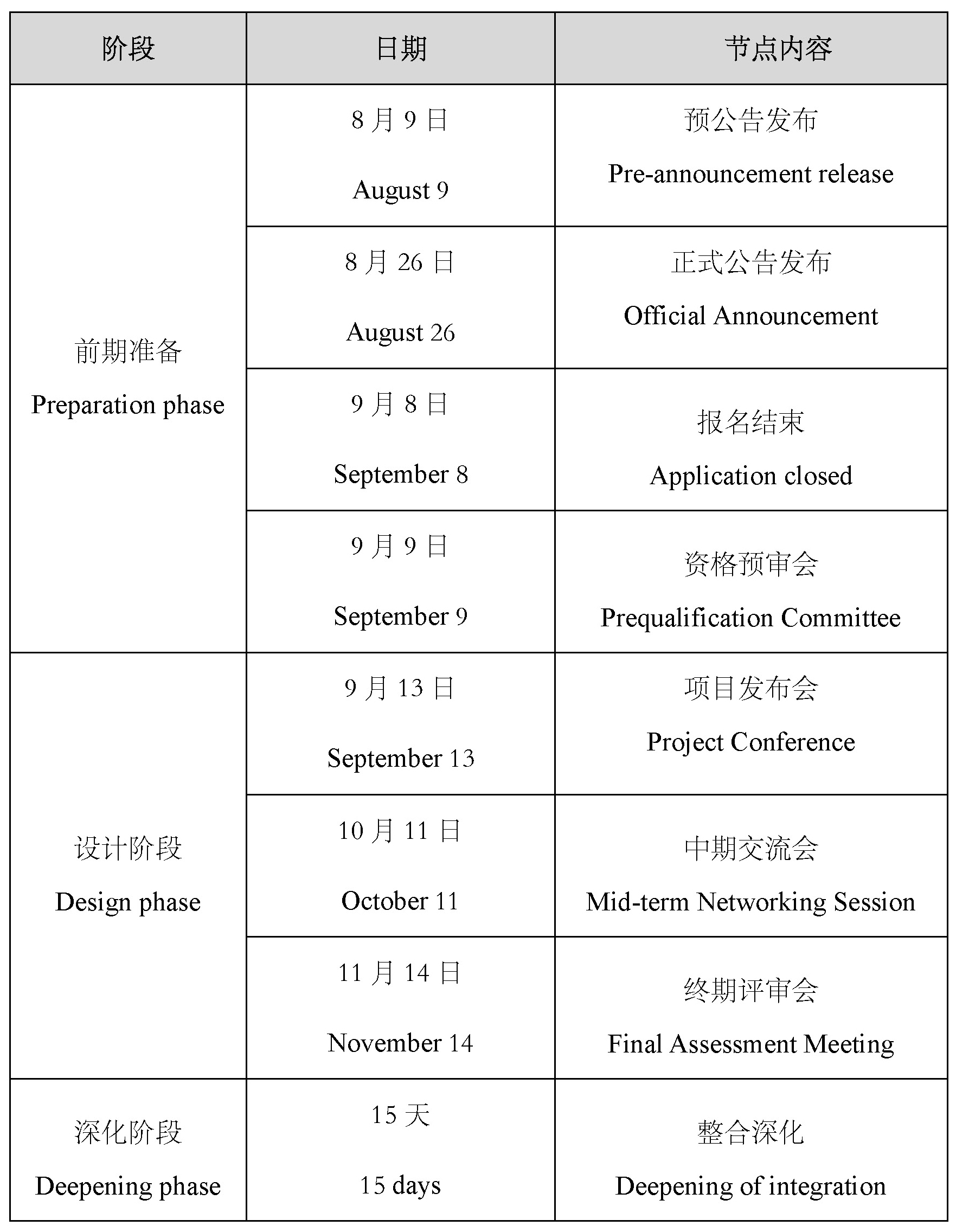
七、应征要求
7. Qualification Requirements of Applicants
应征申请人(以下简称“申请人”)应为合法注册的法人实体或由合法注册的法人实体组成的项目联合体(成员机构不得超过3家)。
申请人应具有承担本项目的相关资格及能力(满足下列条件之一)
(1)中华人民共和国境内的应征申请人提供能证明其具有承担城市规划、景观设计、建筑设计的专业技术能力的证明材料,如城乡规划编制甲级资质等证书;
(2)中华人民共和国境外的规划设计机构须依本国或本地区的管理规定具有城市规划、景观设计或建筑设计相关专业的执业许可或经营许可。港澳台设计机构的资格要求参照境外设计机构资格要求的规定。
The applicant (hereinafter referred to as the "Applicant") shall be a legally registered legal entity or a project consortium consisting of legally registered legal entities (no more than 3 member institutions).
Applicants should have the relevant qualifications and abilities to undertake this project (at least accordding with one of the following conditions)
(1) Applicants within the territory of the People's Republic of China provide proof materials that can prove that they have professional and technical ability to undertake urban planning, landscape design, and architectural design, such as Grade A qualifications for urban and rural planning;
(2) Planning and design institutions outside the territory of the People's Republic of China shall have a practice license or business license for urban planning, landscape design or architectural design related majors in accordance with the administrative regulations of their own country or region. The qualification requirements of Hong Kong, Macao and Taiwan design institutions refer to the provisions on the qualification requirements of overseas design institutions.
八、奖金
8. Bonus
1. 一等奖1名,给予人民币150万元(含税),需进行15天方案整合深化,深化费用50万元。
2. 二等奖1名,给予人民币120万元(含税);
3. 三等奖1名,给与人民币100万元(含税);
1. 1 first prize, 1.5 million yuan (including tax), 15 days of program integration and deepening, deepening cost of 500,000 yuan.
2. 1 second prize, 1.2 million yuan (including tax);
3. 1 third prize, 1 million yuan (including tax);
九、报名方式
9. Ways of registration

(扫描二维码至预报名链接)
(Scan the QR code to the pre-registration link)
注:此链接为预报名链接,设计团队可以根据实际情况进行修改、重复提交等,此次公开征集最终报名数据以纸质版报名材料为准。
请于北京时间2022年9月8日18时00分前将资格预审文件送至指定地点(指定地点将通过预报名邮箱发送至报名单位),并将资格预审文件电子版发送至电子邮箱:cecainter@163.com
相关事宜请微信咨询:中国生态城市研究院沈磊教授总师团队 胡女士
电话:13032266490
电子邮箱:cecainter@163.com
咨询时间:(周一至周五 9:00-12:00,14:00-17:00)
Note: This link is a pre-registration link, the design team can modify according to the actual situation, repeated submission, etc., the final registration data of this open call is subject to the paper version of the registration materials.
Please send the prequalification documents to the designated place before 18:00 Beijing time on September 8, 2022, with further notice at the designated location (the pre-registration unit will be sent through the pre-registration mailbox), and send the electronic version of the prequalification documents to the e-mail address: cecainter@163.com
For related matters, please consult WeChat: Ms. Hu
Phone: 13032266490
Email: cecainter@163.com
Counseling time: (Monday to Friday 9:00-12:00, 14:00-17:00)
中国生态城市研究院沈磊教授总师团队是全国第一个城市级总师团队。作为中国总师模式的创新实践者和推广者,沈磊教授总师团队专注城市规划建设全过程管理和绿色生态城市产品研发,构建“规划管理、本底研究、实施总控、资源导入”专业规划建设管理平台,持续为政府提供城市高质量规划建设发展的全过程、全要素、全方位技术支撑。
The team of Professor Shen Lei of China Eco-City Research Institute is the first city-level team of the Planners in China. As an innovative practitioner and promoter of the chief division model in China, Professor Shen Lei's team focuses on the whole process management of urban planning and construction and the research development of green ecological city products, builds a professional planning and construction management platform of "planning management, background research, implementation of general control, and resource introduction", and continues to provide the government with the whole process, all elements and all-round technical support for the development of high-quality urban planning and construction.
扫码下载【附件1:技术任务书】及【附件2:应征任务书】

台州市自然资源和规划局路桥分局
浙江路桥飞龙投资开发有限公司
2022年8月26日






